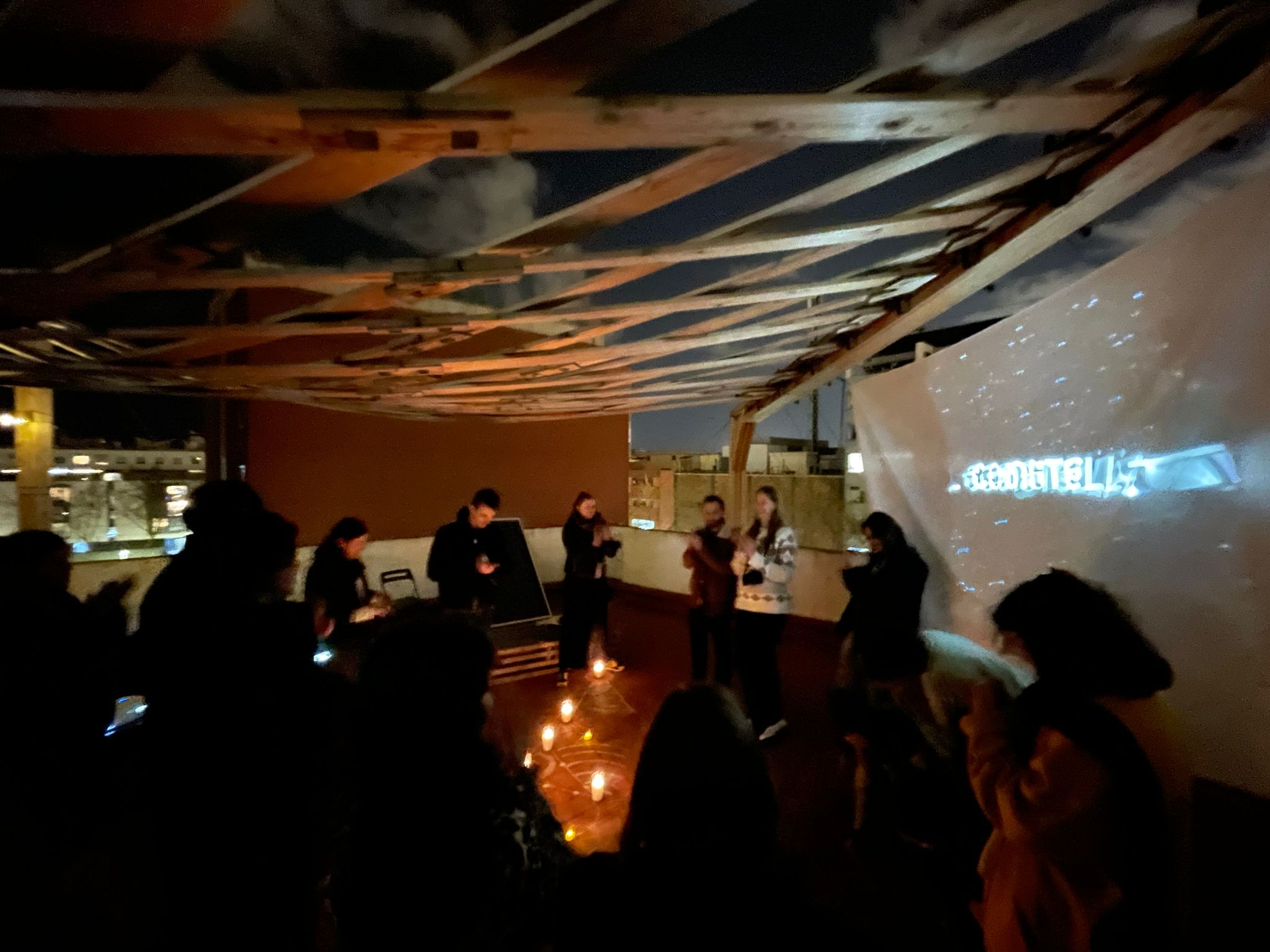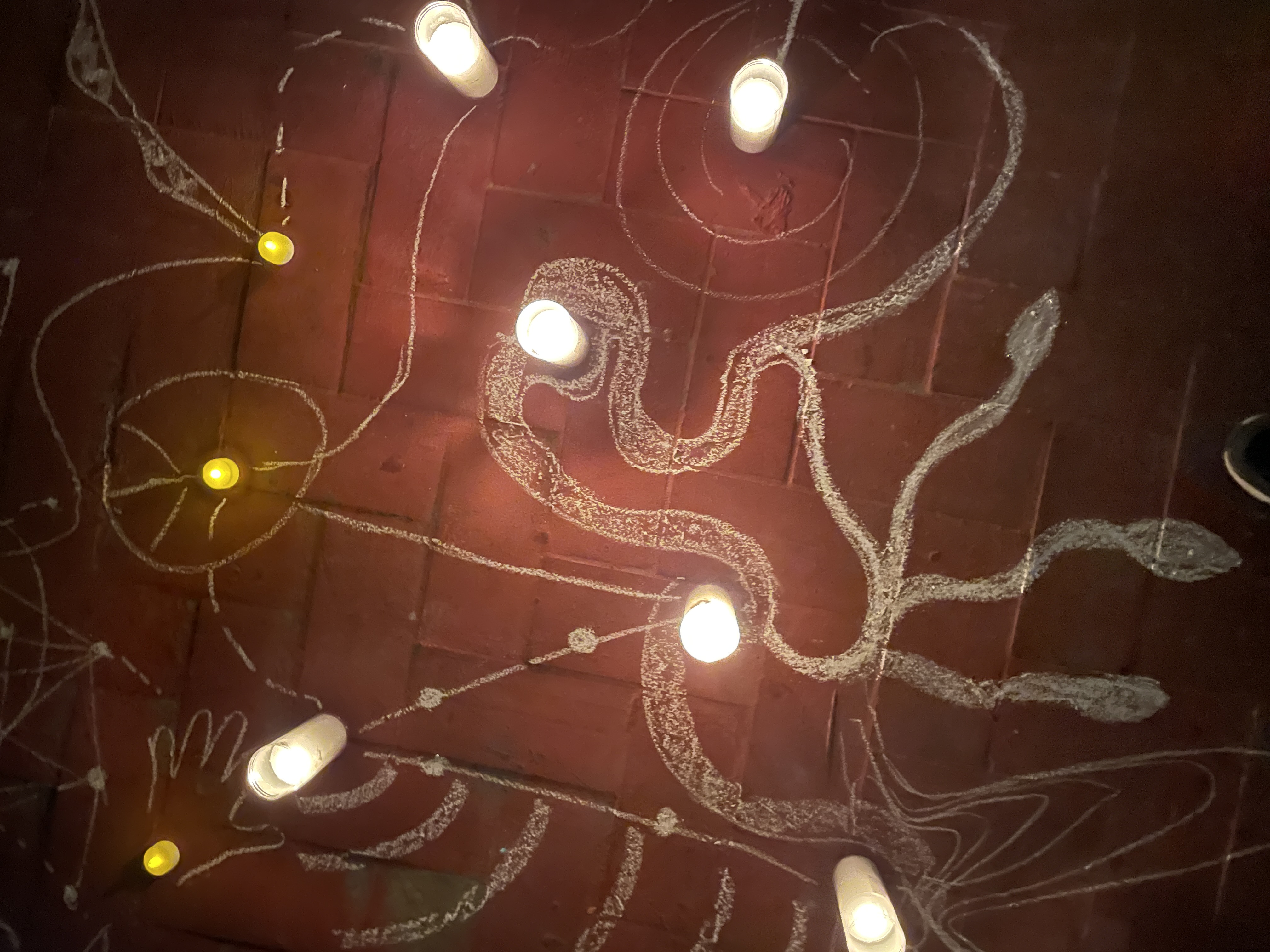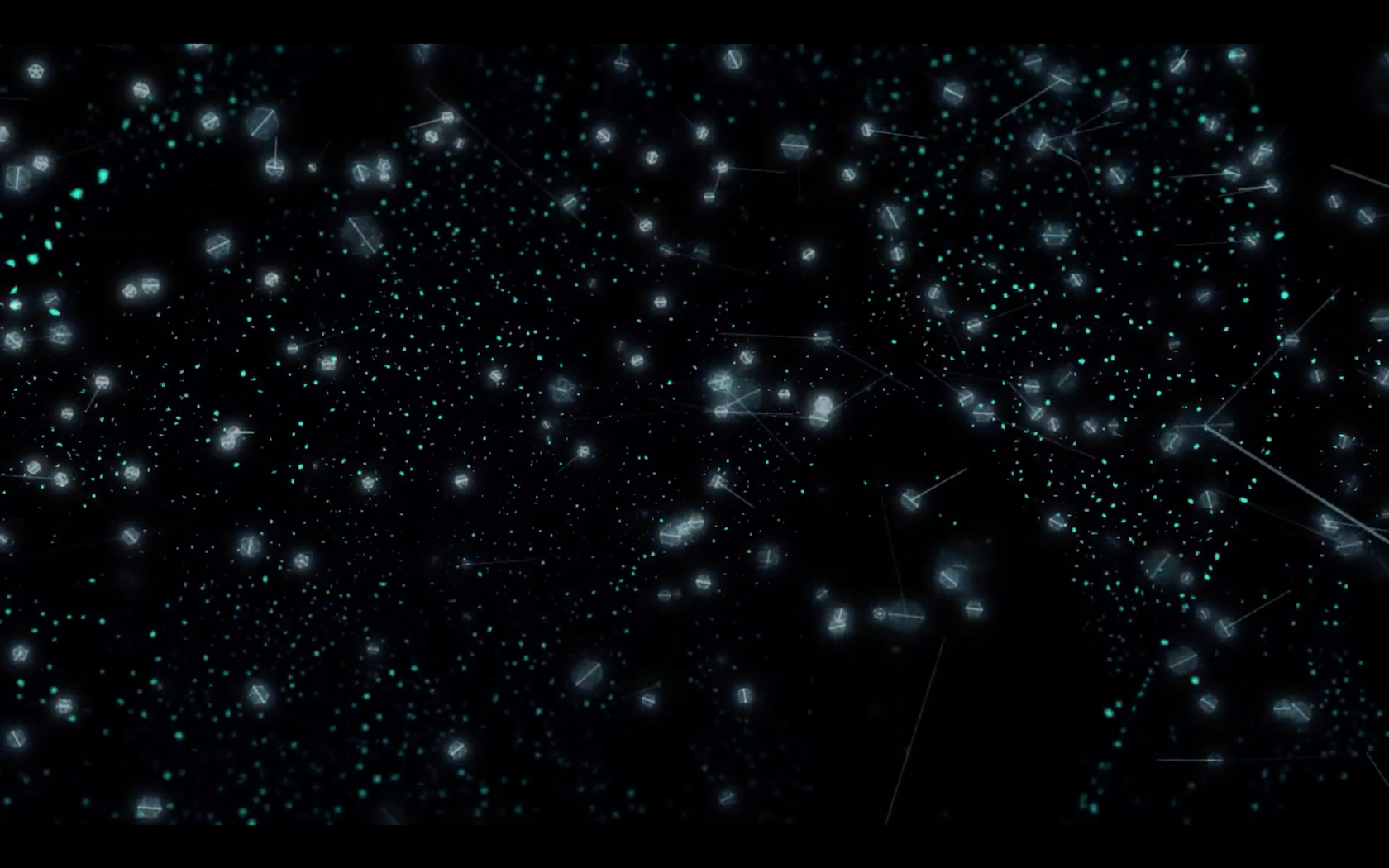Concept
Artificial Constellations. I was always fascinated by generative visuals, especially when being sound reactive. To merge music and visual design together to create an immersive experience was an intriguing concept to me that combined two of my creative passions, and one that I had never explored before. Together with Tatiana, we chose to embark on such a collaboration, called

Tatiana proudly presenting our technical projection setup while doing the test run.
For our conceptual starting point, we chose to investigate the contemporary phenomenon of light pollution. Since our urban and industrial areas are emitting an increasing amount of light, we successively seeing less and less of our stars and constellations in our night sky. That is, despite the fact that the firmament played such a pivotal role in forming us as a species, from our ancestral legends to high-sea navigation of the renaissance. Even today, our fascination with the stars is unbroken as we reach beyond our solar system in the conquest for ever-expanding frontiers. So, how might our intimate relationship with constellations and celestial bodies change, when we have more and more trouble seeing them at all? Do we change our relationship with technology or do we change our cultural narratives around the night sky by reinterpreting what we see up there? Artificial Constellations was an exploration into these open-ended questions.
Execution
The final audiovisual product.
Based on melodies of Tensorflow's Magenta plug-in, which uses a pre-trained network to generate harmonic variations, I produced a 4-minute long audio track in Ableton Live. The sound design aimed to take the viewer from idyllic clear skies to shifting constellations, which are increasingly disintegrating while revealing new symbols between them. Based on the drone-heavy, atmospheric track, Tatiana built a generative visuals pipeline in Touchdesigner by separating the individual frequencies to trigger different dimensions of the animated particles. After heavy post-processing in After Effects, the result was an immersive journey through the cultural significance of our nighttime sky and the symbolism that is tied to it.
Intervention


The visitors waiting for the installation to start (left), an introductory speech before the screening (right).
As for the time and place to show this result, we chose a rain-free evening at the end of March, where the screening happened in candle light under the bare sky on the rooftop terrace of IAAC's Pujades 102 building, which resulted in a wonderfully atmospheric setting.

A special kind of gathering.
After the screening, we asked the participants to engage in drawing new constellations on the floor together, using candles as a stand-in for stars and white chalk as the lines connecting them. The result was a mosaic of culturally and spiritually significant symbols, as well as some contemporary objects of worship.


A part of the new constellations that was collectively drawn after the screening.

Another detail of the newly drawn constellations, depicting a schematic drawing of an electrical circuit featuring a rainbow and a heart.
